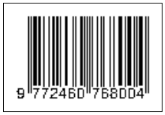Purwarupa Sistem Kendali PID: Studi Kasus Kendali Suhu Ruang
Dyah Aruming Tyas(1*), Raden Sumiharto(2)
(1)
(2)
(*) Corresponding Author
Abstract
Abstrak
Sistem pengendalian otomatis banyak memberikan keuntungan bagi manusia. Selain dapat mempercepat waktu kerja, pengendalian otomatis juga dapat mengurangi kesalahan yang dilakukan oleh manusia (human error) dan meningkatkan efektifitas kerja. Salah satu aplikasi pengendalian otomatis adalah pengendalian suhu dengan tujuan memperoleh suhu yang diinginkan dalam waktu yang relatif singkat serta dapat mempertahankan suhu dalam kondisi stabil meski terdapat gangguan.
Sistem pengendalian suhu dapat diimplementasikan menggunakan board Arduino dan LabVIEW. Pada sistem pengendalian suhu ini digunakan tiga buah sensor suhu LM35. Ketiga sensor suhu teresebut diletakkan pada posisi yang berbeda di dalam plant untuk mengetahui penyebaran suhu yang terjadi pada plant. Salah satu sensor tersebut selain untuk mengetahui persebaran suhu juga digunakan sebagai feedback. Data dari sensor kemudian masuk ke board Arduino, yang pada sistem pengendalian suhu ini berfungsi sebagai akuisisi data. Untuk menjaga suhu di dalam plant, digunakan heater untuk menaikan suhu jika suhu plant dibawah set point dan kipas ventilasi untuk menurunkan suhu jika suhu di dalam plant melebihi set point. Untuk mengendalikan heater dan kipas ventilasi ini digunakan kendali PID yang diimplementasikan melalui LabVIEW. Pada kendali PID diperlukan tiga parameter yang bisa didapatkan dengan penalaan Ziegler-Nichols.
Hasil dari penelitian menunjukkan bahwa respon plant adalah osilasi kontinyu dan bisa diatasi dengan menggunakan penalaan osilasi kontinyu Ziegler-Nichols. Dengan menggunakan kendali PID pada LabVIEW dan penalaan parameter menggunakan metode Ziegler-Nichols, untuk set point suhu 40oC didapatkan respon plant sebesar (40±0,5) oC. Dengan kata lain pengendalian suhu menggunakan kendali PID dan metode Ziegler-Nichols memiliki error dibawah 2% yang menunjukkan bahwa sistem kendali suhu ini layak untuk digunakan.
Kata kunci— suhu, kendali PID, LabVIEW, board Arduino, Ziegler-Nichols, feedback
Abstract
Automatic control system provides many benefits for humans. Besides being able to speed up work time, automatic control can also reduce the errors made by humans (human error) and increase work effectiveness. One application is the automatic control of temperature control in order to obtain the desired temperature in a relatively short time and can maintain the temperature in a stable condition despite the presence of interference.
Temperature control system can be implemented by arduino and LabVIEW. The temperature control system sensor uses three LM35. Three temperature sensors were placed at different positions within the plant to determine the temperature distribution that occured in the plant. One of the sensors was usued determine the temperature distribution and used as feedback. Temperature from the sensors were procesed in the Arduino board, at which this temperature control system serves as a data acquisition. To keep the temperature inside the plant, the temperature control system used heater to raise the temperature when the temperature was below the set point and the plant ventilation fan to lower the temperature if the temperature inside the plant was above the set point. To control the heater and ventilation fan PID controller was implemented through LabVIEW. PID control takes three parameters that can be obtained using the Ziegler-Nichols tuning.
Results from the study show that the response of the plant is a continuous oscillation and it can be overcome by using continuous tuning Ziegler-Nichols oscillation. The LabVIEW PID control and the tuning parameters using Ziegler-Nichols method set to 40oC set point plant responses result in (40±0,5) oC. In other words, temperature control using PID control and Ziegler-Nichols method has an error rate of 2%, which indicates that the temperature control system is feasible to be used.
Keywords— Temperature, PID control, LabVIEW, Arduino board, Ziegler-Nichols, feedback
Full Text:
PDFArticle Metrics
Refbacks
- There are currently no refbacks.
Copyright (c) 2013 IJEIS - Indonesian Journal of Electronics and Instrumentation Systems

This work is licensed under a Creative Commons Attribution-ShareAlike 4.0 International License.
View My Stats1







